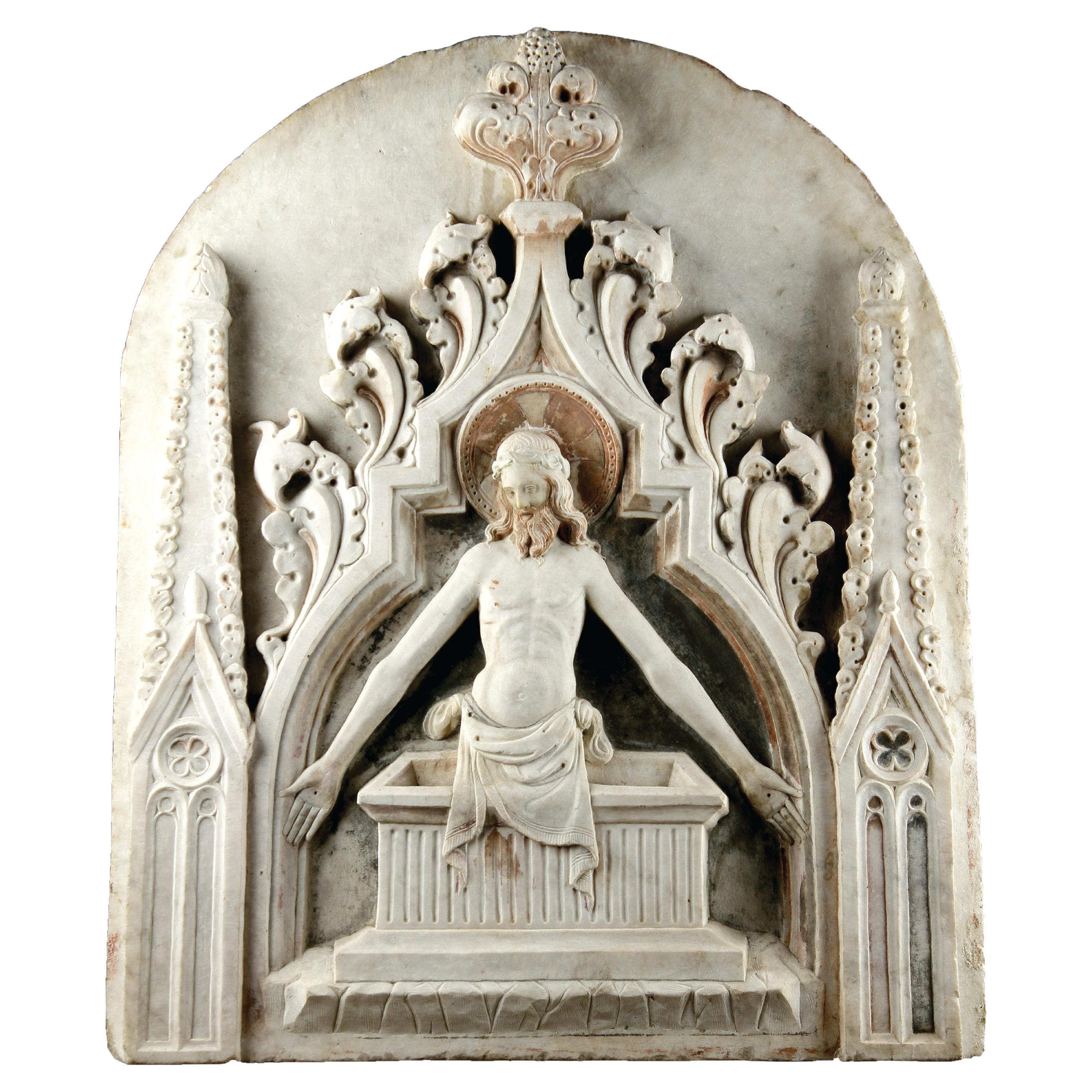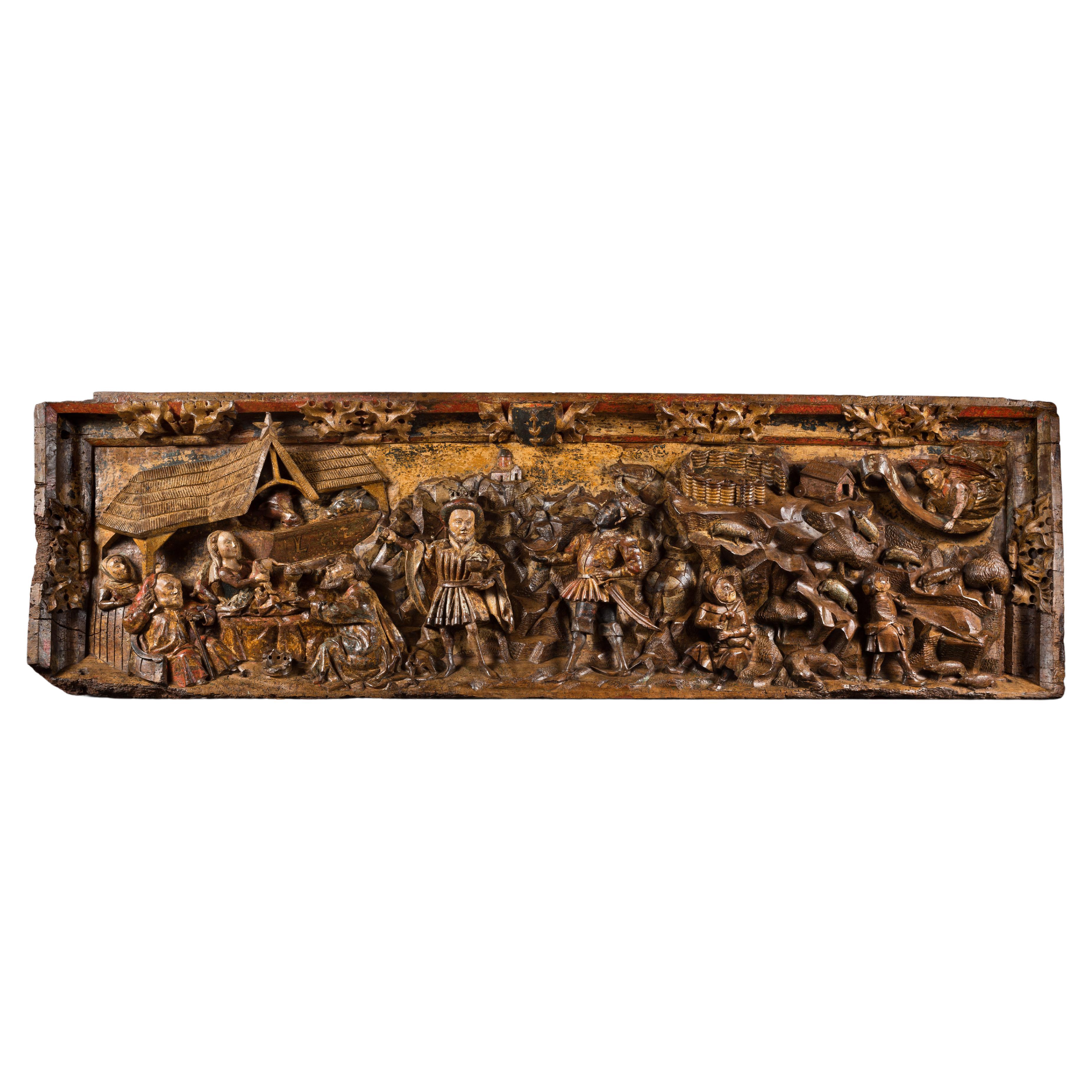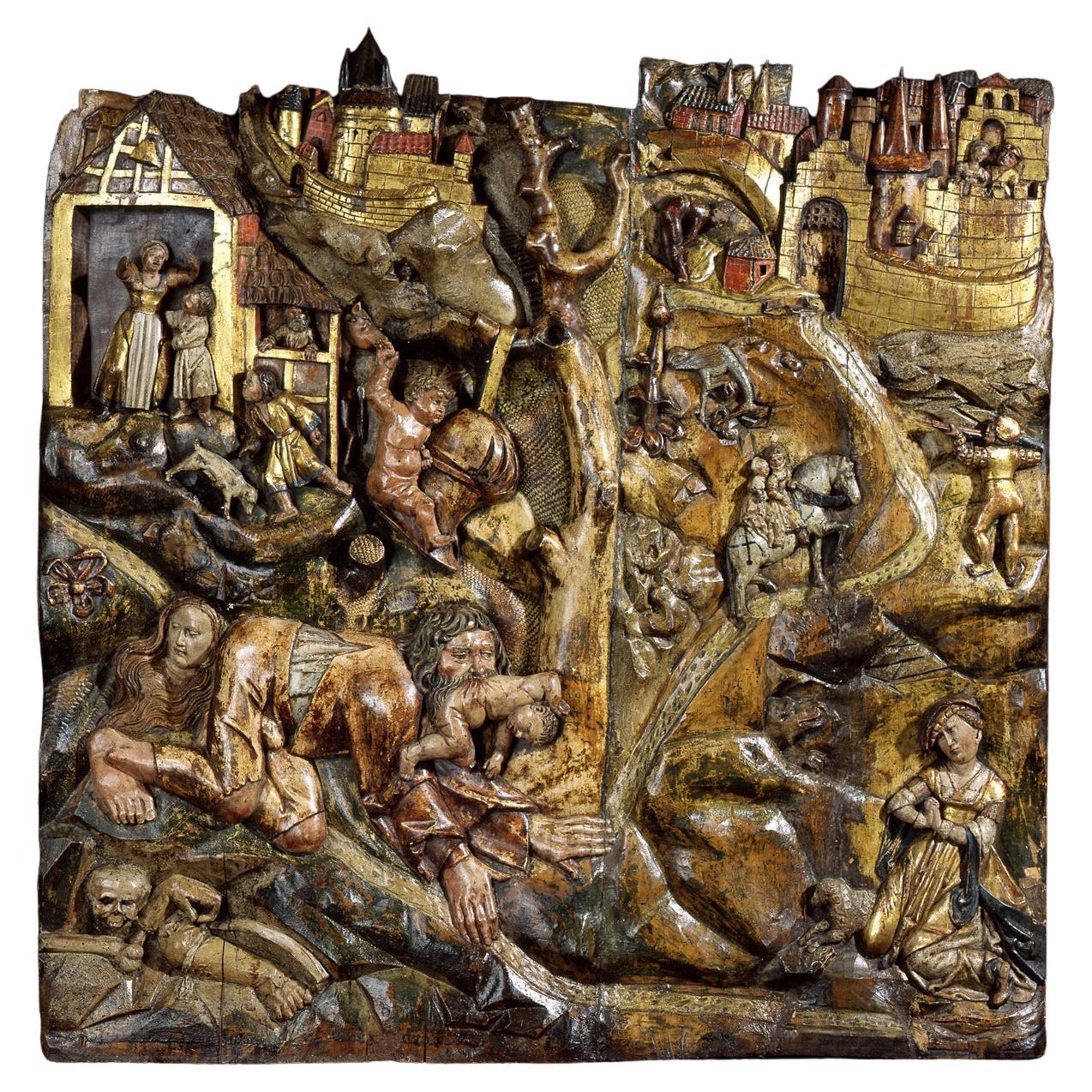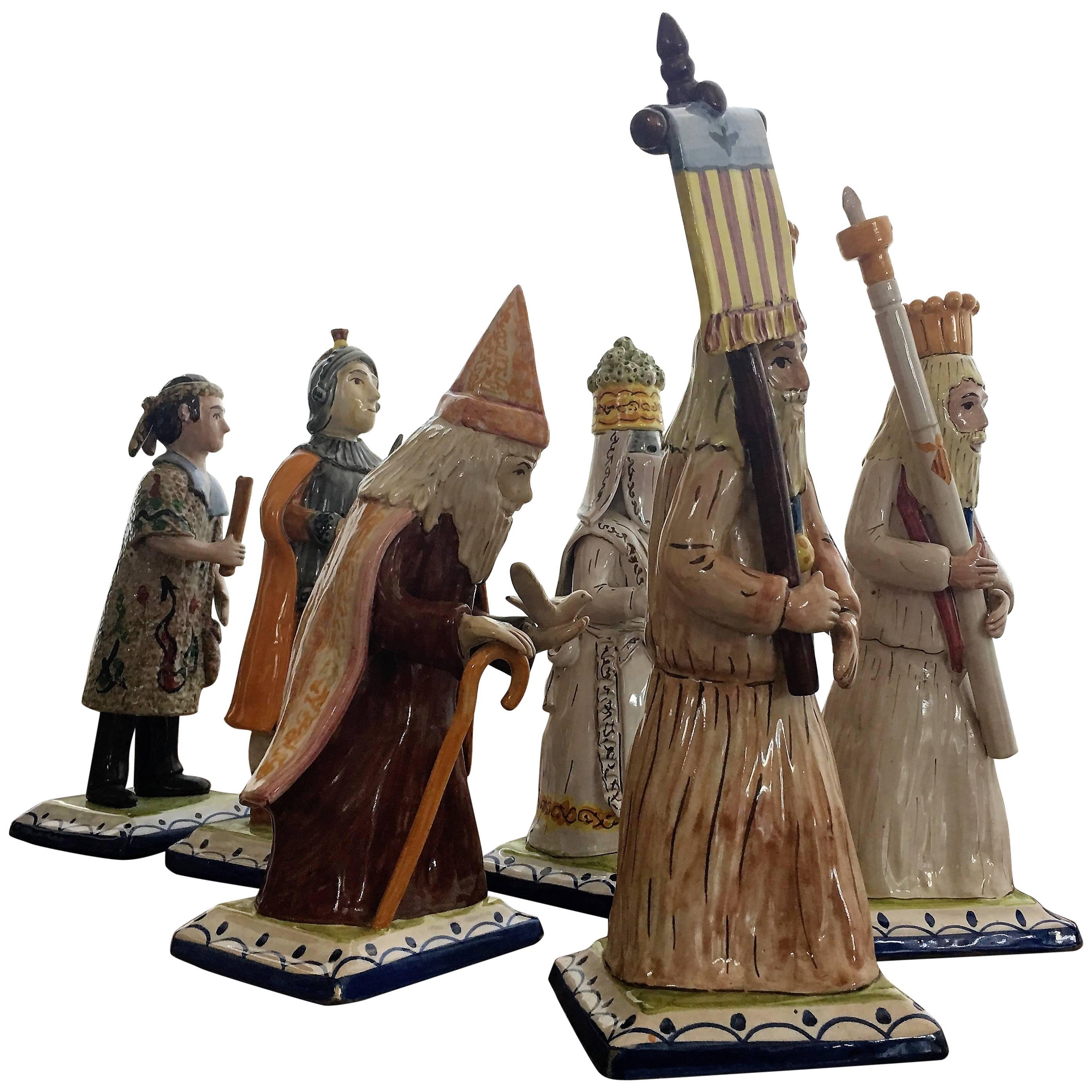Items Similar to Important Polychrome Low-Relief Depicting Christ in the Mount of Olives
Want more images or videos?
Request additional images or videos from the seller
1 of 4
Important Polychrome Low-Relief Depicting Christ in the Mount of Olives
About the Item
IMPORTANT POLYCHROME LOW-RELIEF DEPICTING CHRIST IN THE MOUNT OF OLIVES
ORIGIN: SOUTH GERMANY or ALSACE
PERIOD: ca. 1500-1510
Height : 78 cm
Length : 57 cm
Depth : 8 cm
Limewood
Good condition
This scene of Christ praying in the Mount of Olives follows the Last Supper and precedes the arrest. The episode is told in three gospels (Matthew 36:36-46, Mark 14:32-42, Luke 22:39-46). Artists have usually depicted Luke’s version, with Jesus kneeling instead of bowing, face against the ground, like in the two other gospels.
This theme was particularly in favour during the late Middle-Ages, notably in Germanic regions. This interest can be explained by the liturgy and the popular devotion of the time. Indeed, mystic scholars would advise worshippers to meditate on Christ’s sufferings while contemplating the cycle of the Passion. Thus, worshippers praying for their redemption identified with the figure of Christ praying before his death, sacrificing himself to redeem humanity.
From the 16th century onward, the celebration of the night of Maundy Thursday could be held outside the church in front of life-size depictions of this episode of Christ in the Mount of Olives.
Smaller depictions were meant for a private use to decorate chapels or private oratories. Those reliefs could also be part of a larger ensemble figuring various biblical scenes.
After having shared his last meal with his disciples, Christ went to the garden of Gethsemane, to the Mount of Olives, an enclosed olive-tree grove. He was accompanied by Peter, James the Great and John. The three of them quickly fell asleep will their master prayed.
In the foreground Jesus is kneeling. Hands in prayer, alone and anxious about his upcoming ordeal. He is bare feet, dressed in a long golden tunic. The heavy fabric is marked by deep pleats. Strands of curly hair spread in his back.
Behind him are the three apostles. Peter and John are figures according to the established iconography - the former is old, bearded and bold while the latter is young, beardless and with lush curly hair. They are both seated with their head in their hand, sleeping soundly. James his hidden behind the shoulder of his brother, one can only spot the top of his head.
The scene takes place amidst rocks evoking the scene at the Mount of Olives from the gospels. On the right side is sculpted a bountiful olive-tree.
A strong feeling of calm is conveyed by this large low-relief. The faces, the draperies are finely executed.
This depiction is very close to the engraving by Martin Schongauer, Christ on the Mount of Olives from around 1480. One can recognise the same attitude of Christ kneeling, with his head raised and hands in prayers.
- Dimensions:Height: 30.71 in (78 cm)Width: 22.45 in (57 cm)Depth: 3.15 in (8 cm)
- Materials and Techniques:
- Period:
- Date of Manufacture:1500-1510
- Condition:Wear consistent with age and use. Minor fading.
- Seller Location:Saint-Ouen, FR
- Reference Number:1stDibs: LU3115336040192
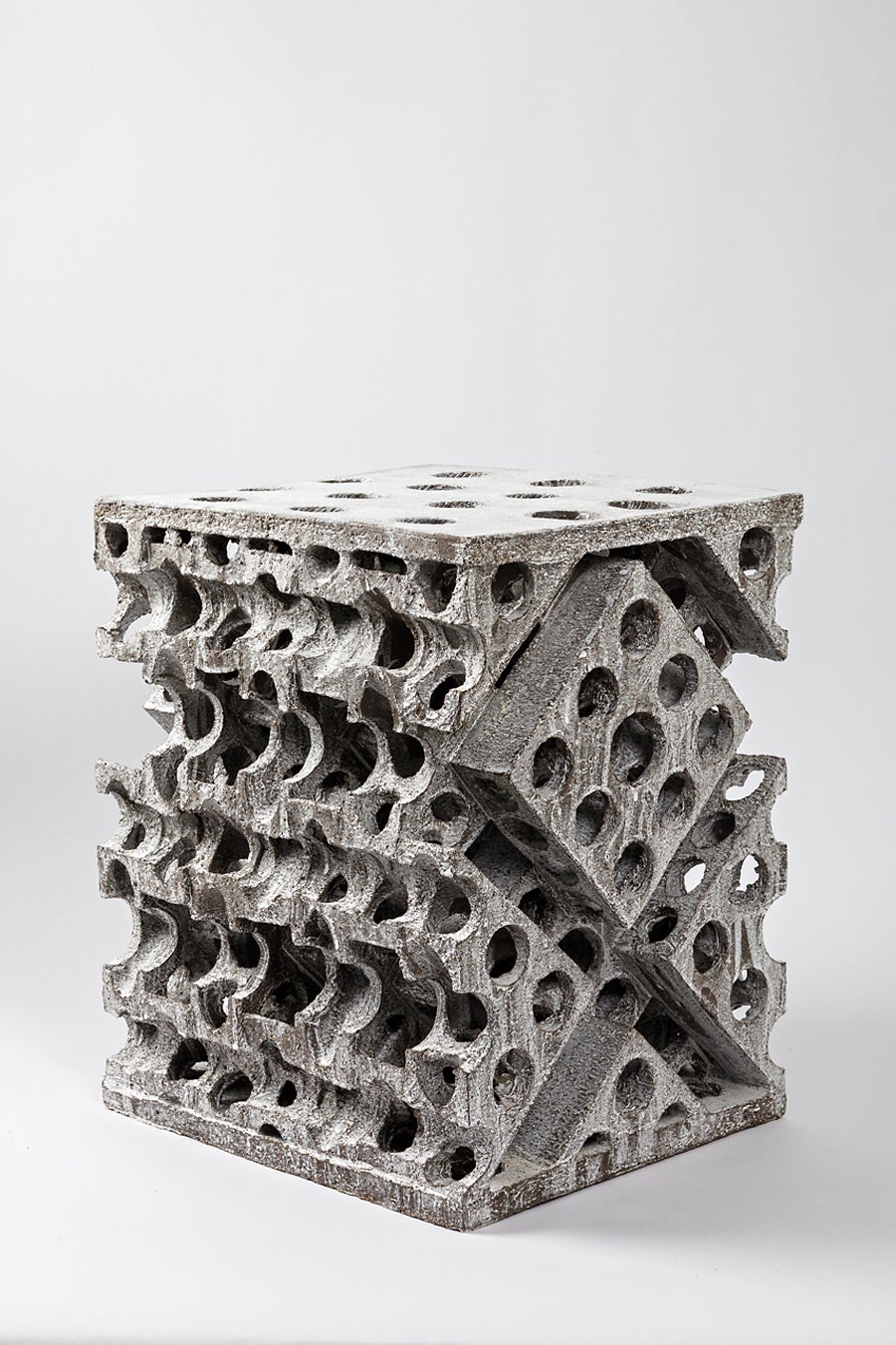
About the Seller
5.0
Vetted Seller
These experienced sellers undergo a comprehensive evaluation by our team of in-house experts.
Established in 2016
1stDibs seller since 2017
153 sales on 1stDibs
Typical response time: 7 hours
- ShippingRetrieving quote...Ships From: Paris, France
- Return PolicyThis item cannot be returned.
More From This SellerView All
- 15th Century Burgundian Low-Relief Depicting Scenes of the NativityLocated in Saint-Ouen, FRProvenance : In the same private collection for several generations, Burgundy. The canonical Gospels describe briefly the episode of the Nativity. It comprises three parts : • The Preludes : the Journey to Bethlehem, the Census • The Nativity • The Announce to the Shepherds and the Adoration of the Magi Only the Gospel according to Matthew (2, 1-12) speaks about the Adoration of the Magi. Staying vague about their number it does say they brought the newborn gold, incense and myrrh. The apocryphals, the fathers of the Church and many other authors have filled in the gaps of the evangelic tale. The sobriety and symbolic of the story have been a huge inspiration to artists. Although one of the oldest depictions of the Adoration of the Magi dates from the 2nd century the theme became very popular in Christian art during the late 14th century. One of the reasons explaining this success is that it celebrates both the Virgin and Christ at the same time. This important walnut panel is carved in a strong relief and depicts the different steps of the story of Jesus’ birth. On the left, the donkey and ox that have accompanied Mary and Joseph from Bethlehem are depicted behind a trough. On the thatch roof appears the star that would guide the magi to the place of birth of Jesus. Mary is wearing a veil and is seating on a bed. She holds her baby at arm’s length to present him to the magi. Saint Joseph is by her side. The old man is holding a cane in his left hand while from the right hand he seems to uncover himself to greet the visitors. A woman assists to the scene. In front of the holy family the three magi stand behind one another to pay their homage to the newborn. The first magi has a pointed beard. He is already kneeling out of deference and has placed his crown to his feet. He gives the baby a hanap filled with gold coins. This is Melchior as the legend describes him with white hair and a long beard. Caspar, the second magi bears a cup of incense. He is looking at the third magi and with his right hand he points to the star that has guided them there. He has a short beard and wears crakow shoes, breeches and a wide sleeved doublet. Finally Balthazar, the elegant last magi proceeds proudly towards the holy family with his one hand on the saber’s hilt and the other holding a cup. He brings the divine child the myrrh. He probably just dismounted as the horse can be seen behind him. The scene is set in a very detailed and narrative decor. In the right part of the panel the shepherd receive the announce of Jesus’ birth. An angel comes down from heaven with a scroll bearing the good news in his hands. The herding dog sleeps peacefully while sheeps graze. At the top of the cliff we notice the gilded sheeps enclosure. The panel’s moulded frame is carved with a foliated decor. In it’s centre appears a coat-of-arms. It is the alliance of the three magi’s arms. Indeed as it was common for legendary figures the three of them received imaginaries coat-of-arms. Thus, on a field of azure stands a star for Melchior, a crescent for Caspar and a pennon for Balthazar. This high-relief panel is undeniably the work of a very skilled and imaginative artist. This key moment in the New Testament is transposed to a contemporary environment thanks to the figures’ clothing and the rural daily life scene. This way the universal dimension of the episode is highlighted allowing a better understanding for the contemporaries. The sculptor has represented the episodes of the Adoration of the Magi and the Announce to the Shepherd with great talent and numerous details giving life to a picturesque and narrative scene. The important traces of polychromy give those already very animated scenes a stronger pictorial power and a rich dynamism. Because of the picturesque and familiar realism so dear to the artists of the late Medieval era, of the didactic function of this type of panel as well as the quality of the sculpture this piece is an astounding example of Burgundian art of the 15th century. Literature Louis Réau, Iconographie de l’Art chrétien...Category
Antique 15th Century and Earlier French Gothic Figurative Sculptures
MaterialsWalnut
- Carved Wood Depicting the Resurrection of ChristLocated in Saint-Ouen, FRCarved wood depicting the resurrection of Christ ORIGIN : SOUTHERN NETHERLANDS, ANTWERP PERIOD : EARLY 16th CENTURY Height : 67.5 cm Len...Category
Antique 16th Century Figurative Sculptures
MaterialsOak
- Wood Low-Relief Depicting a Werewolf and Saint GeorgeLocated in Saint-Ouen, FRExceptional polychrome wood low-relief depicting a werewolf and saint george after a woodcut by lucas cranach (“DER WERWOLF” 1512) Provenance : collection Brimo de Laroussihle c...Category
Antique 16th Century German Renaissance Figurative Sculptures
MaterialsWood
- Important Wood Sculpture, Gothic Depiction of Saint WenceslausLocated in Saint-Ouen, FRIMPORTANT WOOD SCULPTURE, GOTHIC DEPICTION OF SAINT WENCESLAUS ORIGIN : CENTRAL EUROPE PERIOD : MID-15th CENTURY Height : 83 cm Length : 30 cm Depth : 20 cm Basswood Good condit...Category
Antique 15th Century and Earlier Figurative Sculptures
MaterialsWood
- Late 15th Century Polychrome Wood Carving Depicting the NativityLocated in Saint-Ouen, FRWhile the birth of Christ is briefly told in the Gospel of Luke (2, 7) it is in the apocryphal texts that we find most of the elements and details that have then inspired artists. As of the 14th century and even more of the 15th century the subject of the Adoration of the Child replaces in Western art the scene of the Birth, much favoured in Byzantine art. Instead of being depicted lying with the new-born swathed in the manger, the Virgin is now kneeling, her hands joined in prayer in front of the naked child. This change was probably hastened by the popularity of the visions of Saint Bridget of Sweden to whom the Virgin allegedly appeared to show how she had given birth to Jesus (Visions, VII, chap. 21). Sheltered by a thatch-roofed structure the Virgin is kneeling in front of the Child Jesus. She wears a magnificent red dress under a large gold cloak. Her curled blond hair is partially veiled. The newborn is lying on a straw mat. Joseph is depicted with a parted beard and stands opposite from the Virgin. He wears a tunic and a coat with a purse hanging from the belt. His costume reminds us of the long journey him and Mary have accomplished to reach Bethlehem. Two other women are present. One is looking through the stable’s window to observe the Holy Family while another one kneels in prayer in front of the divine child. The rich costume of the lady might indicate she is a donator. However they could also both represent the women who took part in the birth of Christ, Zelemi and Salome. Salome, incredulous did not believe in the virginal conception of Mary and she is represented far from the scene. The artist has depicted her with an expression of doubt on her face. Zelemi, on the contrary, is a believer. She is rewarded by a place of honour at the heart of the scene, close to Mary. To the left the donkey and ox that have accompanied Mary and Joseph to Bethlehem observe quietly the scene. On the foreground two angels hold a scroll reading an excerpt from the Gloria : “/Gloria/ in excelsis /Deo/.” One of the angels wears a blue cape while the other’s is red Those two colours are very significant as during Middle-Ages blue symbolises hope and red charity. Together they express the hope in redemption thanks to the advent of Christ and his sacrifice to come. Above the main scene, up a cliff, a small shepherd lets his herd of sheep graze amidst the trees. He is framed by two walled cities. This wood carving is the work of a very skilled and inventive artist. The piece bears witness to his exceptional talent. The realism of the scene is emphasised by the amount of details depicted. The refinement of the carving itself is highlighted by the well preserved polychromy. This key moment of the New Testament is set in a contemporary context thanks to the clothes of the characters and the scenes of rural life. The universal dimension of the scene is intensified while allowing contemporary viewers to grasp its meaning more easily. This care for details, the picturesque realism as well as the extraordinary rendition of the cloths suggest it was made by a Flemish artist during the late 15th century. This relief can be compared with the panel of the Nativity from the Saint-Vaast altarpiece made by Jacques Daret between 1433 and 1435, today in Madrid’s Thyssen-Bronemisza Museum. Literature Louis Réau, Iconographie de l’Art chrétien...Category
Antique 15th Century and Earlier Dutch Gothic Figurative Sculptures
MaterialsWood
- Carved Polychrome Wood Depicting Saint FlorianLocated in Saint-Ouen, FRCARVED POLYCHROME WOOD DEPICTING SAINT FLORIAN ORIGIN : SWABIA, SOUTHERN GERMANY PERIOD : LATE 15th CENTURY Height : 98 cm Length : 29 cm Depth : 24 cm Polychrome limewood Very fi...Category
Antique 15th Century and Earlier Figurative Sculptures
MaterialsWood
You May Also Like
- A Very Rare and Important Marble Relief of the ‘Resurrection of Christ’Located in London, GBA Very Rare and Important Marble Relief of the ‘Resurrection of Christ’ Attributed to the Master of the Mascoli Altar Marble Venice, Italy Second half of the 15th Century SIZE: ...Category
Antique 15th Century and Earlier Italian Renaissance Figurative Sculptures
MaterialsMarble
- Pair of Reliefs in Marble Représenting the Virgin Mary and Christ after GIRARDONBy François GirardonLocated in VERSAILLES, FRRare pair of white marble médallions, first part of the 18th century, after François Girardon (1628-1715) The original model for these two profiles of the Virgin and Christ dates from 1691. These works were created to adorn the marble high altar...Category
Antique 18th Century French Louis XIV Wall-mounted Sculptures
MaterialsMarble
- Set of Six Polychromed Figures Depicting the Processions of Holy WeekLocated in Miami, FLSet of six polychromed figures depicting the processions of holy week in Valencia, Spain All the sculptures signed by the ceramist Antonio Peiró.Category
Mid-20th Century Spanish Art Deco Religious Items
MaterialsCeramic
- Important Pair of Cherubs in Carved, Gilded and Polychrome Wood from the 17th CLocated in Madrid, ESImportant Pair Of Cherubs In Carved, Gilded And Polychrome Wood From The 17th Century. It is of very good quality (see the work on the clothes). In very good conditions. The base is...Category
Antique 1680s Figurative Sculptures
MaterialsWood
- Antique Terracotta Religious Wall Plaque / Sculpture of Christ in Deep ReliefLocated in Lisse, NLImpressive and all handcrafted, early 1900s sculpture of Christ suffering. Just like in the days when Christ lived on our planet, the truth (about who we are and how to best live o...Category
Early 20th Century European Renaissance Revival Figurative Sculptures
MaterialsTerracotta
- 19th Century Italian Relief Bronze Plaque of Jesus ChristLocated in Hamilton, OntarioWell crafted with a beautiful patina, 1890's bronze relief plaque of Jesus from Italy measuring 10" x 7.5" x .75".Category
Antique Late 19th Century Italian Figurative Sculptures
MaterialsBronze
Recently Viewed
View AllMore Ways To Browse
Carl Milles Statue
Copper Snail Sculpture
Dandy Watch
Drunk Monks
Egyptian Shabti
Georges Recipon
H Levasseur
Marianna von Allesch On Sale
Max Le Verrier Sculpture Spartiate
Roberto Nischli
Sabino Nude
Stone Head Sculture
Susanne Vertel
Terraco Draak
Thomas B Maracle
Tomasso Brothers
Toy Killjoy
Alfred Barye On Sale
